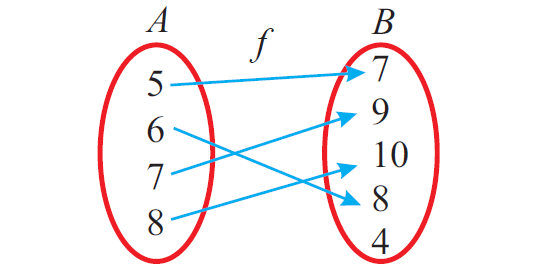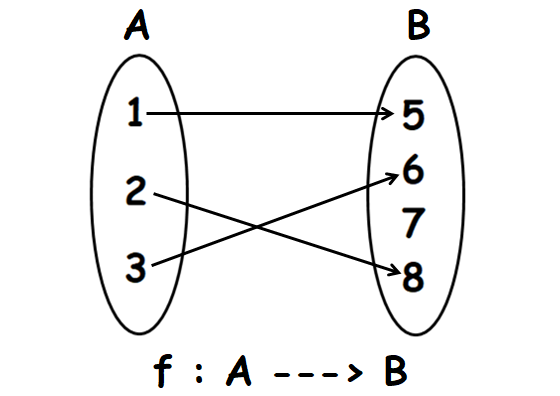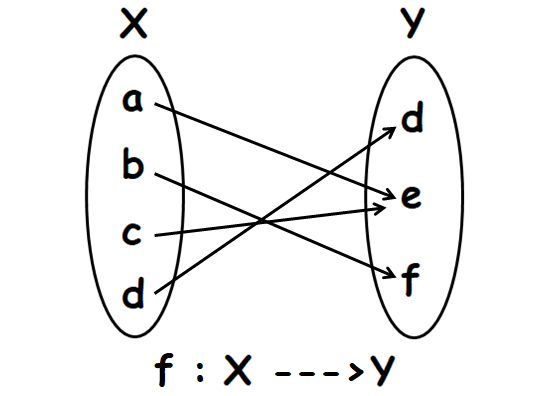INTO FUNCTION
Let f : A ----> B be a function.
There exists even a single element in B having no pre-image in A, then f is said to be an into function.
The figure given below represents a one-one function.

Solved Problems
Problem 1 :
Let f : A ----> B. A, B and f are defined as
A = {1, 2, 3}
B = {5, 6, 7, 8}
f = {(1, 5), (2, 8), (3, 6)}
Is f into function? Explain.
Solution :
Write the elements of f (ordered pairs) using arrow diagram as shown below

In the above arrow diagram, all the elements of A have images in B and every element of A has a unique image.
That is, no element of A has more than one image.
So, f is a function.
There exists an element 7 in B having no pre-image in A.
Therefore, f is into function.
Problem 2 :
Let f : X ----> Y. X, Y and f are defined as
X = {a, b, c, d}
Y = {d, e, f}
f = {(a, e), (b, f), (c, e), (d, d)}
Is f into function ? Explain.

In the above arrow diagram, all the elements of X have images in Y and every element of X has a unique image.
That is, no element of X has more than one image.
So, f is a function.
Every element of Y has a pre-image in X.
So, f is not into function.
Related Topics
One to one or Injective function
One to one and Onto or Bijective function
Kindly mail your feedback to v4formath@gmail.com
We always appreciate your feedback.
©All rights reserved. onlinemath4all.com
Recent Articles
-
Digital SAT Math Problems and Solutions (Part - 144)
Apr 14, 25 07:27 PM
Digital SAT Math Problems and Solutions (Part - 144) -
Quadratic Equation Problems with Solutions (Part - 1)
Apr 14, 25 11:33 AM
Quadratic Equation Problems with Solutions (Part - 1) -
Quadratic Equation Problems with Solutions (Part - 2)
Apr 14, 25 11:22 AM
Quadratic Equation Problems with Solutions (Part - 2)
